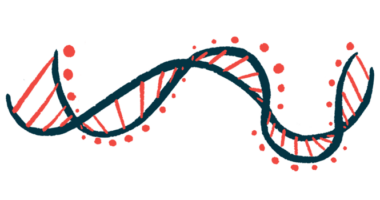New Gene Mutation Seen in Woman With Muscle Weakness Due to CMT2

A new genetic mutation was identified in an Italian woman with severe muscle wasting in the arms and legs due to Charcot-Marie-Tooth disease type 2 (CMT2).
The finding is part of a study that described the clinical characteristics of 13 patients carrying disease-causing mutations in MFN2, a gene that provides instructions for making a protein called mitofusin 2.
The genetic mutations are nearly always inherited from at least one parent. The newly identified mutation was absent in the woman’s parents, meaning it occurred spontaneously.
“Our work expands the genetic spectrum of CMT2A,” the researchers wrote. “Obtaining a precise genetic diagnosis in affected families is crucial both for family planning and prenatal diagnosis, and in a therapeutic perspective, as we are entering the era of personalized therapy for genetic diseases,” they said.
The study, “Clinical and genetic features of a cohort of patients with MFN2-related neuropathy,” was published in Scientific Reports.
CMT2 affects the peripheral nerves, which supply movement and sensation to the arms and legs, and causes what are at first subtle symptoms that worsen gradually over time. Most often, muscles will weaken and waste away, but other symptoms may be present. This varies from patient to patient, even within families.
The study included seven male and six female patients from 10 families who carried one normal copy and one mutated copy of MFN2.
Age at first symptoms — difficulty walking being the most common one — varied widely from early childhood to late adulthood (1 to 69 years). At the time of the study, the age of the patients ranged from 8 to 77.
The severity of symptoms ranged from mild to severe, with most patients having severe symptoms. Eleven (85%) participants were unable to walk independently and required a walking aid or a wheelchair to get around.
“These data demonstrate the presence of moderate-to-severe burden of disease in daily life, as opposed to other forms of CMT,” the researchers wrote.
Patients with childhood-onset CMT2 had more severe symptoms than those with adult-onset disease, and all three patients with adult-onset CMT2A carried the same mutation — p.R280H.
Six patients (46%) had sensory symptoms. Other symptoms were present in eight (61%) patients: damage to the optic nerve and reduced vision were present in five (38%) patients; hearing loss in two (15%); and difficulty swallowing and drooping of the upper eyelid in one (8%).
Four male patients had a mutation, called p.R104W, that is linked to developmental delay. Besides these symptoms, three patients carrying the p.R104W mutation had jerking movements of the legs or other manifestations of epilepsy. Two also had difficulty speaking, one had weakness and spasticity (stiffness) of the legs, and another had an unsteady, staggering gait.
Genetic testing revealed that all but one patient had previously described disease-causing mutations. The new mutation, called c.1069A>G or p.K357E (NM_014874), was absent from public databases and was found likely to cause disease by a computer program.
The patient carrying this p.K357E mutation was a 23-year-old woman. She had scoliosis (a curved spine), a high arch in the feet, and severe breathing problems. She used a device to help with breathing at night.
Muscle weakness and loss were severe in both proximal (nearer to the center of the body) and distal (away from the center of the body) parts of the lower limbs and in the distal part of the arms, and mild in the proximal part of the arms. She was unable to walk independently and used a wheelchair to get around. She also needed help with daily activities and self-care.
Other symptoms included loss of the sense of touch, vibration, and position and movement of her own body; damage to the optic nerve; and partial paralysis of the vocal cords.
Examination of the sural nerve, a sensory nerve in the leg, revealed an almost complete loss of fibers and damage to the myelin sheaths that cover and protect the fibers, “as reported in severe CMT2A cases,” the researchers wrote.







